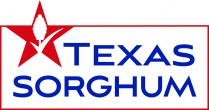Sugarcane Aphid Update—The sugarcane aphid has made an early arrival this season, being found early in South Texas and as far north as the lower Texas Panhandle. Entomologist say although this is concerning, it does not give us any indication of how serious sugarcane aphids may be this season across Texas. Some growers in South Texas began spraying for the aphid last week and are managing the pest with reports indicating populations are low and beneficial insect numbers are increasing. Two products were proven to be very effective during the 2015 growing season – Sivanto Prime and Transform WG. After immense pressure on the Environmental Protection Agency, Texas recently received Section 18 approval for the use of Transform. Dr. Brent Bean, Sorghum Checkoff agronomist, emphasizes the importance of following best management practices, planting early and using treated seed this season, which can prevent early season crop injury from the sugarcane aphid. For additional resources, including best management practices, tolerant hybrids, scouting recommendations and more, click here.
Pesticide Overview—Lately, it seems like not a day can pass without news coming through of the EPA or the courts pulling another valuable crop protection chemical’s label. Despite their wide-reaching impacts, these discussions are typically laden with bureaucratic language, making them less accessible to the general public. To help bridge this gap, Patrick Wade has broken down the two primary recourses producers have to regain access to chemicals whose labels have been pulled:
Section 18 – Pesticide Emergency Exemptions
Should an “urgent, non-routine situation that requires the use of a pesticide” emerge, state or federal agencies may request an emergency exemption for use of an unregistered pesticide. These requests are typically filed in order to avert either a significant economic loss or a significant risk to the environment and/or valuable organisms. Upon receiving this exemption request, the EPA evaluates the validity of the claim, the dietary, occupational, and environmental risks associated, and the pesticide’s present progress towards traditional registration. After a 50-day evaluation, should the claim meet these requirements, the pesticide will be granted one of four exemption statuses:
- Specific Exemption – The most common exemption, occurs when a pest situation is identified that presently registered pesticides are incapable of remedying. The state agency responsible for pesticide management submits the request and the exemption may last up to one year.
- Quarantine Exemption – Occurs when a previously unknown invasive pest appears in the United States. Should the pest’s introduction be proven harmful, this exemption may last up to three years.
- Public Health – Occurs when a pest is determined to cause significant risk to human health. This can last up to one year.
- Crisis – If the need for any of the three aforementioned statuses is proven to be sufficiently immediate, a 15-day crisis exemption may be granted. After the conclusion of that period, one of the three exemptions may be pursued as well.
Section 24(c) – Special Local Need Registration
Another registration exemption afforded by FIFRA is the Special Local Need (SLR) registration, which occurs when a local pest situation cannot be alleviated by presently registered pesticides. Exemptions under this section must meet stricter requirements than those of Section 18. Established tolerance requirements must still be met in this usage, registration for the SLR use cannot have been, at any point, denied or cancelled by the EPA, no unregistered active ingredients can be used, and all registered pesticide options must have been exhausted.
Once cause has been proven, one of two SLNs will be granted: First-Party SLN or Third-Party SLN. The former occurs when the SLN applicant is the registrant of the product, the latter when the applicant is a grower, growers’ association, or anyone other than the registrant.
Once granted by the state agency (the TDA in Texas’s case), an SLR is not subject to a statutory expiration date. The EPA does, however, have 90 days to comment and can ultimately invalidate the exemption.
EPA Finds Glyphosate not Likely Carcinogenic—The Environmental Protection Agency released a report finding the herbicide Glyphosate likely does not cause cancer in humans, disputing the findings by the World Health Organization’s International Agency for Research on Cancer. The EPA’s Cancer Assessment Review Committee made the determination in its finalized report on October 1, 2015, but did not release it to the public until now when the agency mistakenly posted the report online. In the EPA’s review, staffers from the Health Effects Division of the agency’s Office of Pesticide Programs pointed to a number of flaws in the methodology used by the WHO scientists in their review. The WHO finding had serious negative consequences for the agricultural industry and was the basis for California’s decision to require all products containing the herbicide to be listed as carcinogenic. The EPA report was inadvertently posted to Regulations.gov, along with several other glyphosate related documents, on April 29. After the report’s release was widely circulated on social media, the EPA removed the documents on May 2. EPA Spokeswoman Melissa Harrison said the documents were taken down because the assessment is not final. The House Committee on Science, Space, and Technology Chairman Lamar Smith (R-Texas) announced it will investigate why the EPA pulled the report. In a letter sent to the EPA Administrator Gina McCarthy, the Chairman said the agency’s backtracking from the report, which is clearly marked as final, “Raises questions about the agency’s motivation in providing a fair assessment of glyphosate”. Click here to view the final letter and report.








